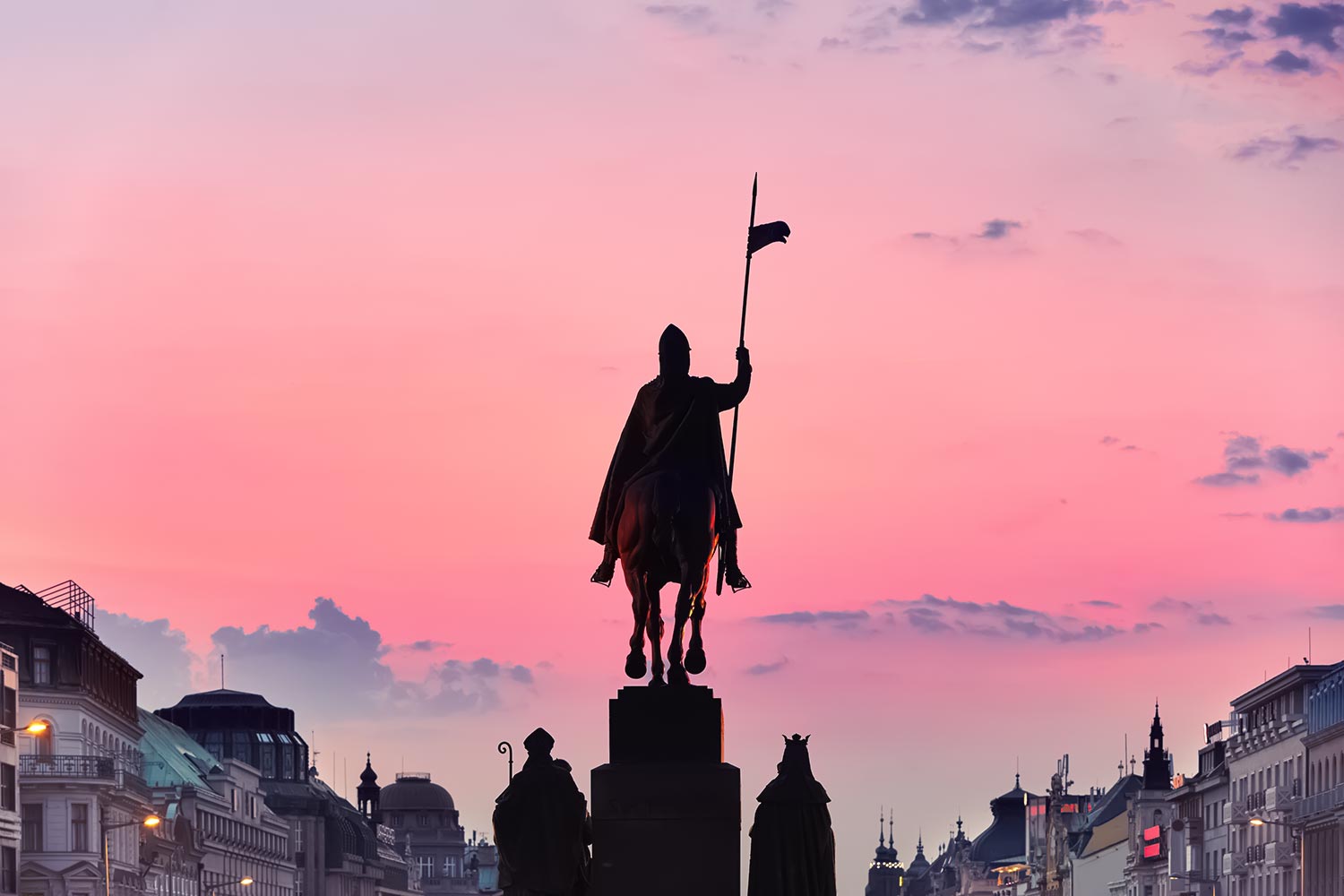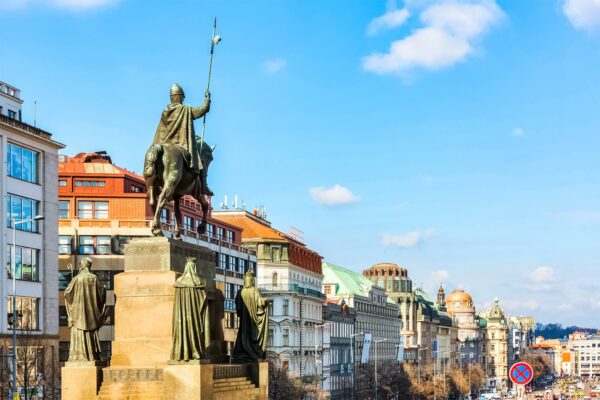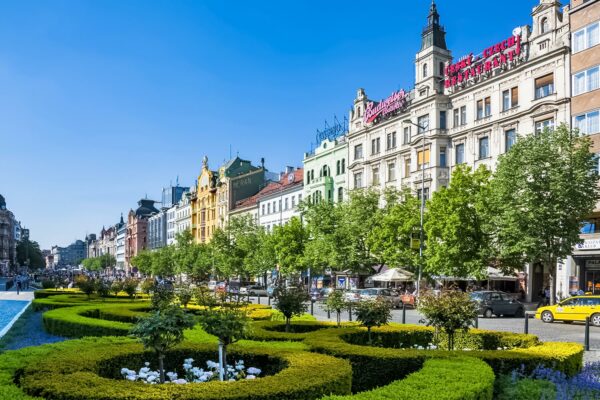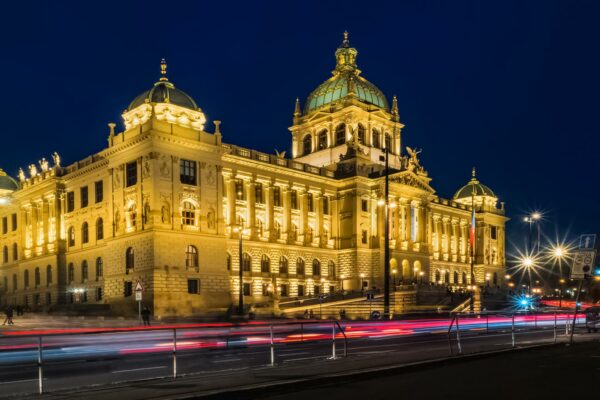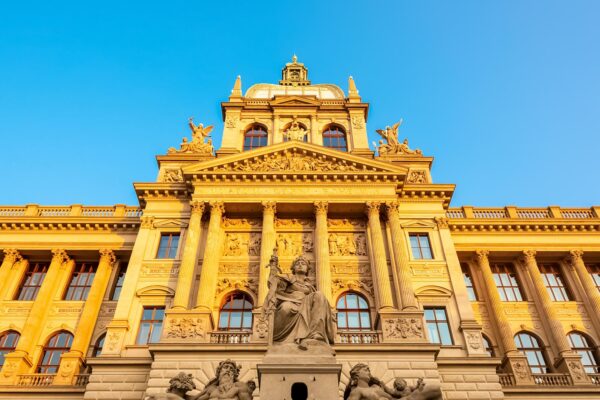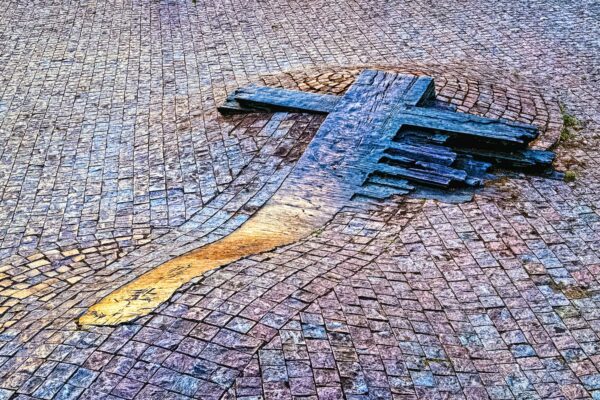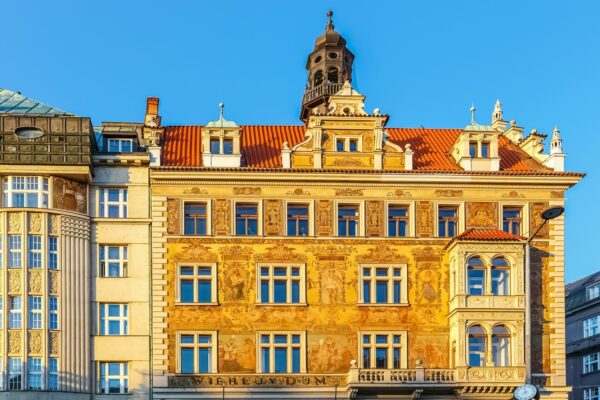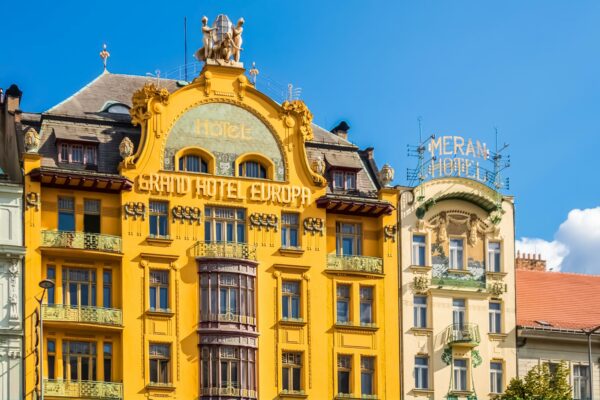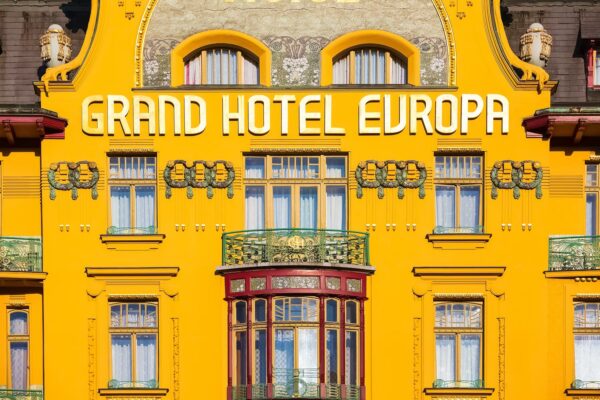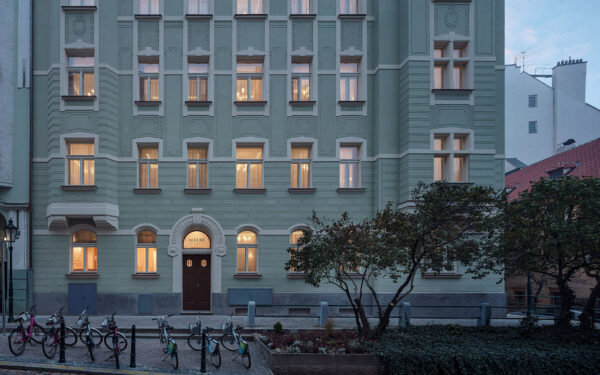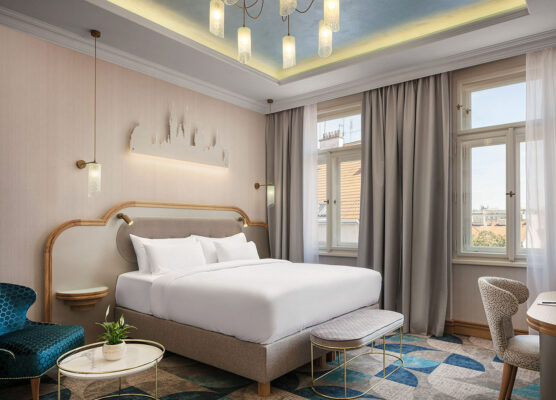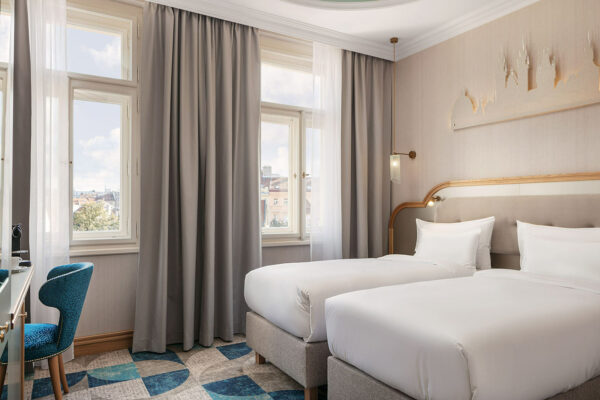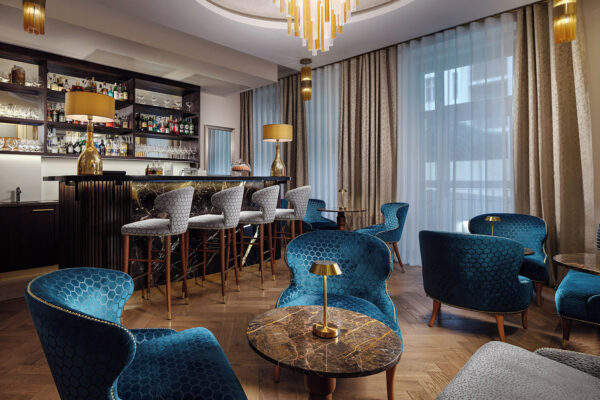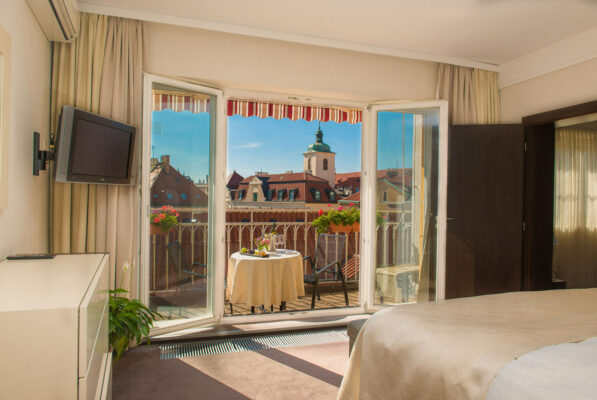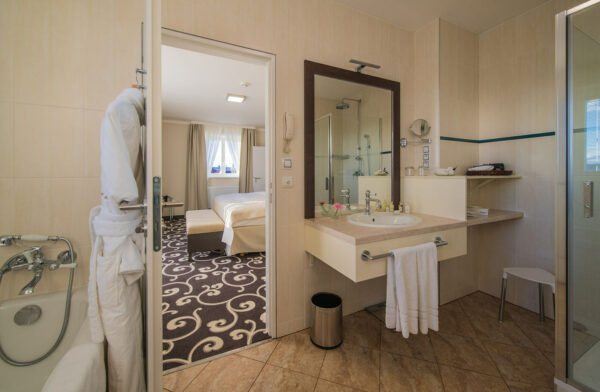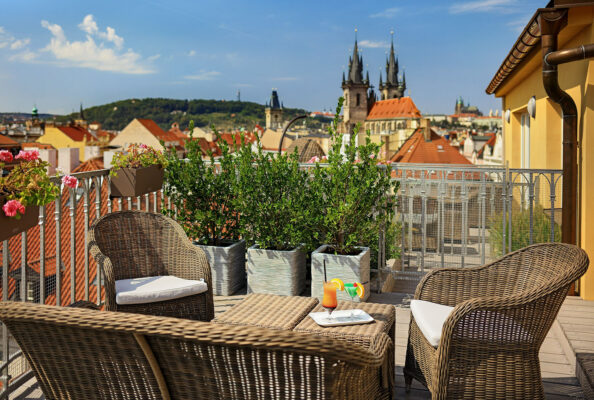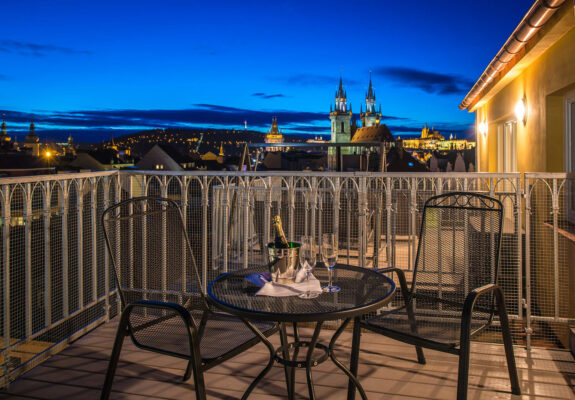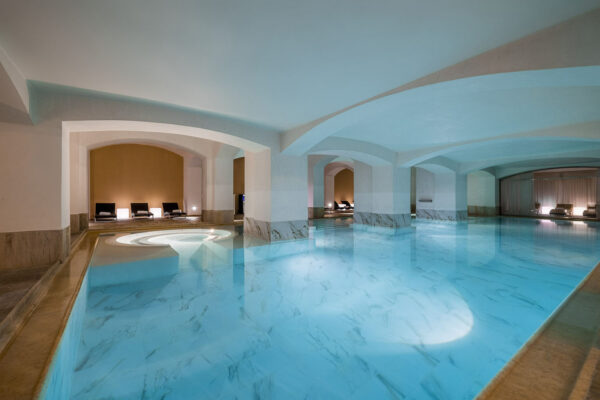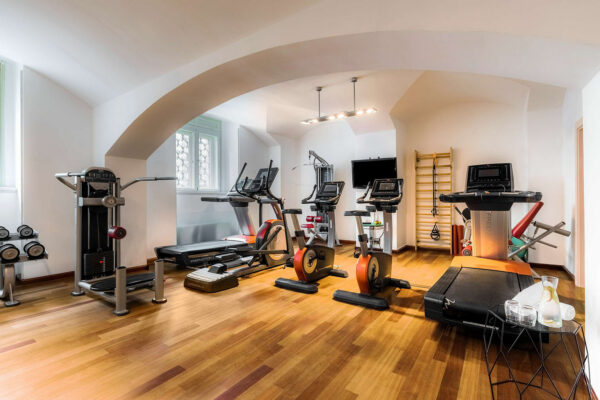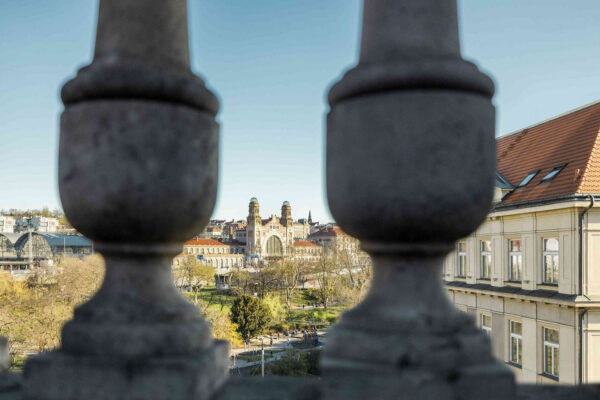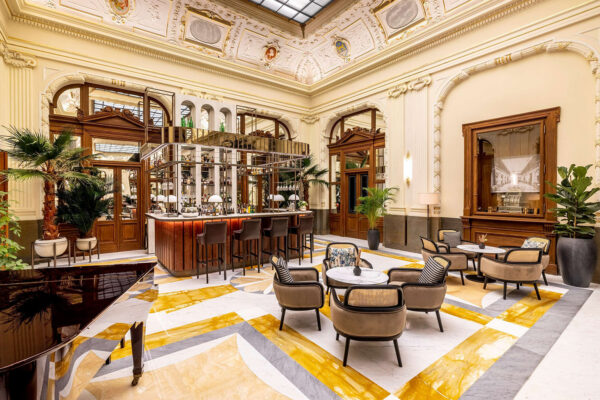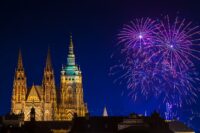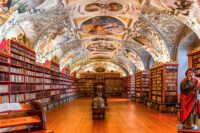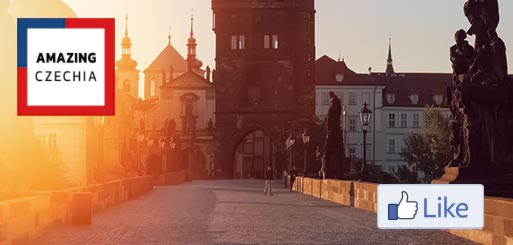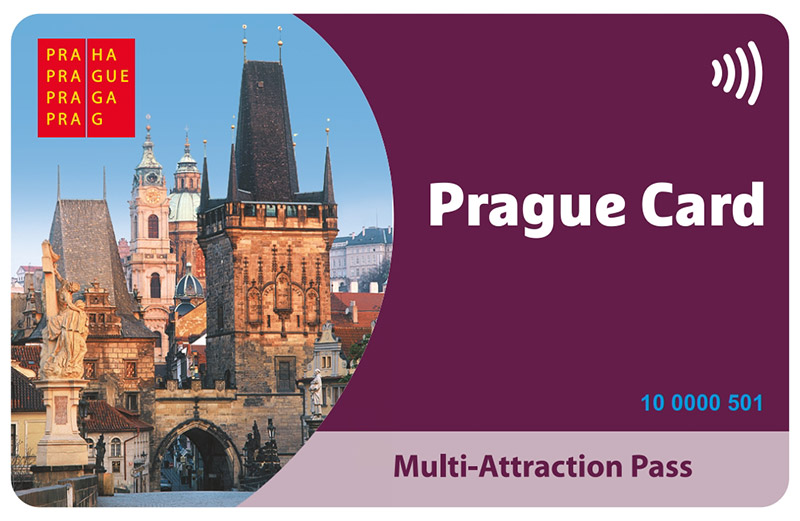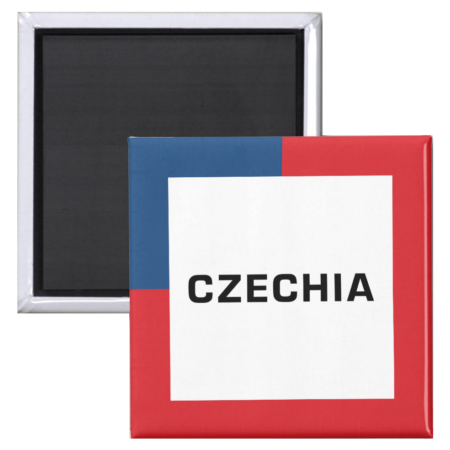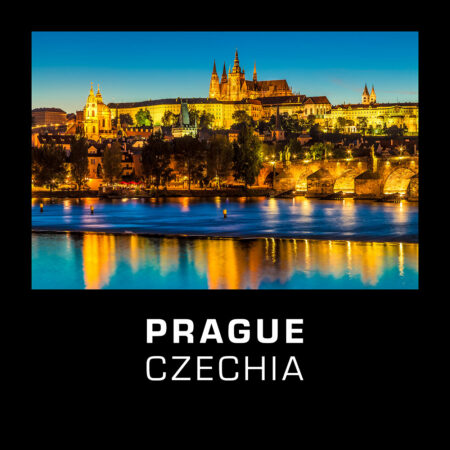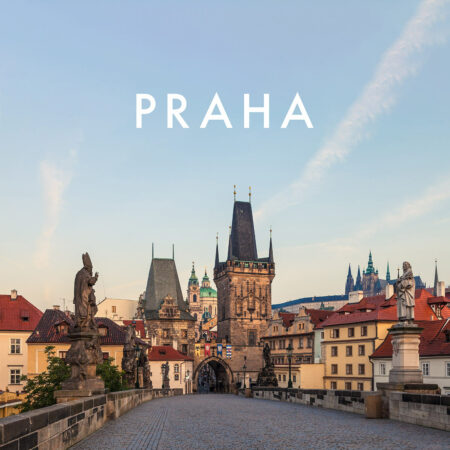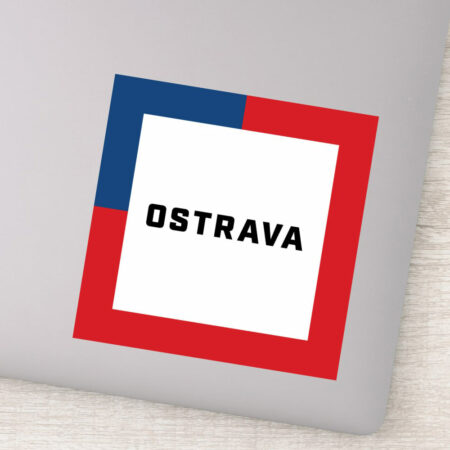Wenceslas Square, in Czech called Václavské náměstí, or colloquially Václavák, is a large square in the New Town district of Prague. As a matter of fact, it doesn't resemble a typical city square at all, but the Czech word náměstí is usually translated into English as "square". Nowadays, it looks more like a boulevard or a wide two-lane street. Centuries ago, however, it was more like a square and was called Horse Market (Koňský trh).
Wenceslas Square, together with Old Town Square, belongs to the most recognizable public squares in Czechia's capital city. It's very hard to miss it when you spend in Prague a few days or more.
It has a clear commercial character at the street level; you will find there retailers, hotels, corporate offices, currency exchange booths, restaurants and also some nightlife establishments. You might say that it is the Czech version of Times Square, but less crowded, with more history and with more stylish architecture.
Apart from its everyday commercial functions, Wenceslas Square plays also another role from time to time. Due to its large size and central location, the square is the natural choice for organizers of large gatherings and political demonstrations.
The largest demonstrations took place during the Velvet Revolution in 1989. Hundreds of thousands of people participated in the demonstrations in Wenceslas Square and those events led to the collapse of communism in Czechoslovakia.
The Main Sights
The Neo-Renaissance building of the National Museum (Národní muzeum) is located at the southeastern end of the square. It dominates the cityscape of Wenceslas Square because of its size, and also because the square slopes upward to the south-east. The museum's entrance is a great place to observe the square or take photographs.
The National Museum was founded in 1818, but at the beginning it was housed in Sternberg Palace (Šternberský palác) in Hradčany. As the collections grew, the museum relocated to Nostitz Palace (Nostický palác) in Malá Strana. That location also turned out to be too small, and in 1891 the impressive building at Wenceslas Square was completed and the museum moved there.
The information about current exhibitions and opening times can be found on the official website of the museum.
The equestrian Statue of St. Wenceslas (Pomník svatého Václava) is another easily recognizable landmark of Wenceslas Square. It is located not far from the National Museum and depicts Wenceslaus I (in Czech: Václav), Duke of Bohemia. He was assassinated in 935 and is considered the patron saint of Czechia. Wenceslas Square is named after him.
The Memorial to Jan Palach and Jan Zajíc (Pomník Jana Palacha a Jana Zajíce) is also located near the National Museum. Jan Palach and Jan Zajíc were Czech students who committed suicide by self-immolation in 1969. In 1968, Soviet-led armies of the former Eastern Block invaded Czechoslovakia to bring an end to the process of political liberalization known as the Prague Spring.
As an act of protest against the invasion, several people committed public suicide by self-immolation: Ryszard Siwiec in Poland; Evžen Plocek, Jan Palach and Jan Zajíc in Czechoslovakia. The last two did it in Wenceslas Square in Prague. The memorial has the form of a bronze cross in the sidewalk. You will sometimes see flowers there.
Wiehl's House (Wiehlův dům) is a Neo-Renaissance building at 792 Wenceslas Square (Václavské náměstí 792). It is named after its designer, the famous Czech architect Antonín Wiehl. The facade is decorated by beautiful paintings by Mikoláš Aleš a Josef Fanta. The ground floor of the building is occupied by a retailer, higher floors are occupied by offices and apartments.
Grand Hotel Evropa is a beautiful Art Nouveau building at 25 Wenceslas Square (Václavské náměstí 25), not far from Wiehl House, on the opposite side of the street. Originally, it was a Neo-Renaissance building, completed in 1872. In 1905, it was reconstructed in the Art Nouveau style by the Czech architect Josef Schulz.
The name may be somewhat misleading, because the building doesn't house a hotel by the name Evropa anymore. If you try to book such a hotel in Prague, you won't succeed. At the time of writing, the building is undergoing renovation. According to Internet sources, there are plans to re-open it in 2020 as a five-star hotel belonging to an international chain of luxury hotels.
Getting to Wenceslas Square
Finding Wenceslas Square is very easy because it's relatively large and is located in the very center of Prague. You can easily walk to Wenceslas Square from the main train station or Old Town Square.
There are two metro stations in the immediate vicinity of the square: Můstek - at the northwestern end (lines A nd B) and Muzeum - at the southeastern end (Lines A and C).
There is also a tram stop nearby. It is aptly named Václavské náměstí. Lines: 1, 2, 3, 5, 6, 14, 24, 41, 91, 92, 94, 95, 96 and 98 stop there.


